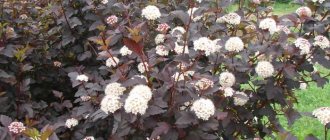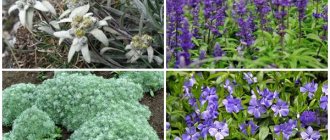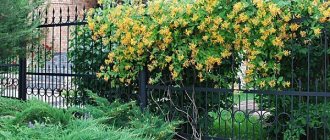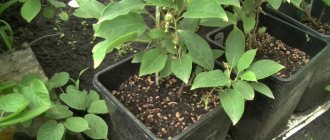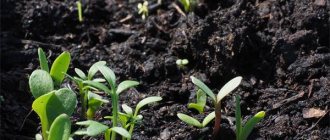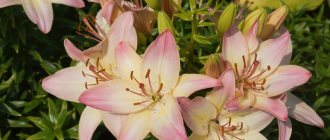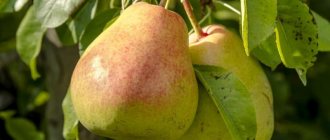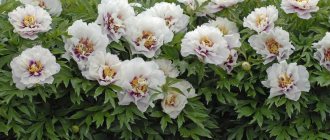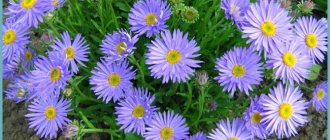- April 21, 2019
- Flowers
- Ekaterina Komisarova
One of the most common and beautiful garden flowers are peony asters. Photos of plants fully confirm this. With their help, you can transform your garden plot and make it more vibrant and interesting. Many summer residents love this crop for its wide variety of varieties, ease of care and unpretentiousness. Asters adapt well to almost all soils and in many climate zones. However, in order for the flower to grow strong and healthy, and always delight with its beauty, it is necessary to follow certain tips and recommendations for its cultivation. This and much more will be discussed further.
Description of culture
Peony aster, in comparison with many other garden plants, is distinguished by its decorative effect and long flowering period. To date, breeders around the world have bred more than 600 different varieties, which makes it possible to create unique flower arrangements in the garden and use the crop in landscape design. A distinctive feature of asters is their powerful and well-developed root system. The shoots can be erect or sessile, and they grow rather large leaves of regular shape.
During the active growing season, massive buds appear on the stems, resembling baskets. If you look at the photo of the peony aster, you will notice that the shade of the flowers can be very diverse. It depends on the specific variety. The same applies to the size of the buds. Their diameter can vary from 1 to 15 centimeters. Compared to its relatives, this variety of Asteraceae has longer and more abundant flowering. With proper care, the height of the bushes reaches 50 cm. They are branched, thanks to which they retain their columnar shape.
Selection of seeds and varieties for sowing
As mentioned above, there is a huge variety of species and varieties of asters, and each flower will attract attention with its shape, splendor, incredible beauty, and unpretentiousness. Therefore, it is not surprising that aster and its annual and perennial specimens are considered the most popular flowers in the country.
In general, growing aster using seedlings at home is a rather painstaking task. But, a generous reward in the future, if, of course, you do everything right, turns a blind eye to all the difficulties during cultivation.
Seed selection
In modern times, you can find many varieties of aster on the Internet and in large stores. But the best way to select seeds is to collect them yourself. The advantage here is unconditional freshness and quality.
Seeds should be collected from the aster 45-65 days after the start of the active flowering period. Dry baskets of inflorescences are suitable for seeds. They should only be collected in sunny weather.
Variety selection
Asters, as mentioned above, are perennial and annual.
Perennial asters, in turn, are divided into spring, summer, and autumn. That is, early, middle and late flowering.
- An early flowering variety of aster is the alpine aster. It will bloom in May and June.
- Medium-flowering varieties include Italian Aster, Clear-leaved Aster, Spreading Aster, and Bessarabian Aster. They will begin to bloom in July-August.
- Late-flowering species include New Belgian Aster, Bush Aster, Heather Aster, and New England Aster. Flowering occurs from September to November.
Annual asters are divided into low-growing, medium-growing, and tall-growing varieties.
- Low-growing flowers fit perfectly on paths in a country garden, in flower beds. Astra Royal is suitable here.
- Tall asters are suitable for further cutting. They are mainly planted for sale.
Most common types
Let's look at this in more detail. As mentioned earlier, today there are more than 600 varieties of aster, each of which has certain distinctive characteristics and preferences for breeding. However, the following varieties are most popular among gardeners:
- "Grey-haired lady."
- "White Tower".
- "Duchess."
These varieties have the highest decorative properties, therefore they are widely used in decorative design and landscaping. Let's take a closer look at each of them and find out why these types of aster won the hearts of summer residents.
Choosing aster varieties and seeds
You know when to plant asters for seedlings in 2021, but choosing seeds is not an easy task. If you buy aster seeds at the market or in a store, pay attention to the date. And choose, depending on the region, which varieties suit you best.
There are many varieties of this flower family and sometimes it can be difficult to choose the best one.
The following types are considered the most beautiful and popular:
- "Duchess." The flowers of this variety are spherical in shape, and the color can be red, pale pink, lilac, etc. All shades of the Duchess variety are rich and colorful.
- Aster “Bouquet” is no less popular among gardeners - it is perfect for creating beautiful bouquets, as the inflorescences hold their shape for a long time. It should be taken into account that this variety does not tolerate frost well.
- “American” - this species is frost-resistant and has beautiful ball-shaped flowers. Its stems are usually short, so such asters are not suitable for bouquets.
- “Snow White” with double inflorescences looks very good in bouquets and will perfectly decorate any flower bed.
It is better to buy seeds in a gardening store, since low-quality or uncertified products of this kind are often sold on the streets.
"The Gray Lady"
This is one of the most beautiful varieties of peony aster. “The Gray Lady”, despite its name, looks very bright. The exact time of discovery of this variety is unknown, but it appeared on the territory of our country almost three centuries ago. Its historical homeland is China, where the flower is a symbol of beauty and everything beautiful in this world.
Garden aster has a well-developed rhizome, so it takes root well on any type of soil. The variety belongs to annual plants. During the active growing season, massive buds of soft pink or deep red color appear on the stems. The shoots are tree-like, forming a powerful bush that grows up to 65 centimeters in height. The inflorescences can be about 10 cm in diameter. The variety is heat-loving, so for plants you should choose well-lit places protected from northern winds.
Preparing aster seeds for sowing
For the seedling method of planting, mainly annual varieties of aster are suitable.
First, it is recommended to soak the selected seeds in water (warm, but not more than 45 degrees) and see which ones float.
This usually takes 15-20 minutes. Those that float to the surface are not suitable for sowing; they need to be thrown away.
Next, you need to prepare a weak solution of potassium permanganate and soak the seeds in it for half an hour to disinfect. After this time, the seeds are washed and dried at room temperature.
"White Tower"
What are its features? This variety differs from other representatives of the Asteraceae family in its excellent decorative properties. White peony aster bushes can reach a height of 50 to 70 centimeters. They are very lush. The average crown diameter is 40 cm, making the plant well suited for decorative pruning. The buds have a hemispherical or perfectly round shape. As you might guess from the name, they are pure white. One bush can have up to 12 shoots, which are densely covered with buds during the flowering period.
The flowering period of the peony aster “White Tower” is intense and long, which is why this variety has gained its popularity among many gardeners. It starts in early July and lasts until mid-September. The plant is unpretentious in care and cultivation, so its cultivation does not require a lot of physical and time expenditure. This will be discussed in more detail below.
Pests
As for harmful insects, nematodes are especially dangerous for the peony aster, leaving characteristic brown spots between the veins of the leaves. If an aster is damaged by these insects, the diseased leaves must be removed, and if the damage is severe, then it is better to destroy the plant completely.
If you notice that the leaves of the peony aster are eaten away and foamy traces of vital activity are observed, know that in this case the slobbering pennice has “worked”. To get rid of the unpleasant manifestations of the presence of this insect, rinse the plant with a hose with water, and then treat it with a weak infusion of garlic.
In the video - protecting flowers from pests:
Spider mites can also threaten the beautiful aster. This insect attacks the plant in dry weather and heat. Having noticed the pest, treat the aster bush with a solution of laundry soap. You can also spray the plant with an infusion of onion, garlic, shag: spider mites cannot tolerate such strong odors.
"Duchess"
The variety is great for creating flower arrangements and decorating bouquets. The height of the bushes can reach 70 centimeters. The flowers, like those of other representatives of the Asteraceae, are large in size. The active growing season is shorter compared to the varieties described above. The buds bloom in mid-August and fall in September.
Despite the fact that the “Duchess” variety of peony aster belongs to the heat-loving category, nevertheless these plants grow excellently in partial shade conditions, so they can be planted along buildings and in close proximity to trees. The bushes reach a height of 70 centimeters. The shoots are densely covered with light green leaves. The buds have a hemispherical shape. As a rule, they are white, but today you can find artificially bred mixtures of aster peony, whose flowers can be of a variety of shades.
A distinctive feature of the variety is its ease of care and unpretentiousness. Plants do not need frequent watering and fertilizing, and also tolerate drought well and are highly resistant to various diseases and harmful insects.
Description
This plant received its name due to the external resemblance of the inflorescences to a peony. The peony-shaped aster has spherical flowers that can reach 10 cm in diameter. The unique shape of the flower is created thanks to the elongated outer petals with short central ones. And the direction of all the petals is in the middle: because of this, the inflorescence has a beautiful ball shape and resembles a peony.
The bush of the plant can reach a height of 40-70 cm, that is, it belongs to medium-sized varieties. The plant retains its shape well due to the weak branching of the stems.
The flowering period of the peony aster is impressive: from July to October you will have the opportunity to admire the wonderful decorative inflorescences of various colors.
Varieties
American Browning (branching)
This is one of the most decorative representatives of peony asters. The petals are distinguished by their bright, rich colors in the range of red and blue shades. The shrub has a decent height for this group - 70 cm. But you can understand what the Aster Pomponna mixture looks like by clicking on the link and looking at the contents of this article.
Branching
Silver Tower
A wonderful decorative variety of peony-shaped asters. The color of the petals in this case is gradient: there is a transition from a soft purple edge to an almost white center. The inflorescences themselves are double, reaching 8-10 cm in diameter.
Silver Tower
The plant blooms in August-September, and is very widely used in gardening due to its decorativeness and versatility. But you can understand what it looks like and how to grow Alpine Aster from seeds if you follow the link.
Red Tower
One of the most ideal plants for cutting. The bush reaches 60-70 cm, and is quite compact in width. The inflorescences have a diameter of 7-10 cm, double, and are distinguished by a decorative dark carmine color.
Red Tower
The flowering period is quite long: from the end of July until the autumn frosts: on average, for two months a year you can admire the flowering of this aster variety. But the video from this article will help you understand how to grow red volcano from Lobelia seeds.
Annushka
The plant has a compact bush 60 cm tall. The inflorescences are distinguished by their splendor and decorativeness: double, dark carmine in color, reaching 8-10 cm in diameter. “Annushka” is loved by gardeners and is widely used both in group plantings and in individual flower beds. Blooms in August-September.
Annushka
Duchess
Terry variety, has bright pink petals. The inflorescences themselves are lush, of a decent size in diameter - 10-12 cm. You can show your imagination and place the plant in outdoor flower pots, thereby transforming your yard.
Duchess
Yellow Tower
As the name implies, in this case the variety has yellow petals. Moreover, the shade of yellow is very gentle, pleasing to the eye, and not flashy. The bush has a height of 60-70 cm, from 9 to 12 inflorescences ripen on one plant: lush and double. The plant is suitable for growing in concrete flower beds.
Yellow Tower
Fontainebleau
A very spectacular, decorative variety of peony asters. The inflorescences are double, reaching a diameter of 11 cm. The color of the petals is very interesting - pale blue at the edges, gradually turning to white in the center. This annual plant is unpretentious, feels good both in group plantings and in single ones, and stands for quite a long time when cut.
Fontainebleau
Advice: if you want to grow an aster with precisely specified color parameters, it is better to buy a bag of factory seeds of a certain variety. Because even if you yourself collect the seeds of the same aster, it is not a fact that they will retain the species characteristics.
Flower propagation
So what do you need to know about this? Since the culture is an annual plant, the only way to propagate peony aster is by growing it from seeds. This method is highly effective. Planting material quickly germinates, takes root and takes root in the garden. You can sow movra in one of the following ways:
- in open ground;
- germination for seedlings;
- stratification method.
Each of them has certain characteristics and requires special technology. Therefore, so that you can determine the most suitable option for yourself, it is necessary to talk in more detail about all the methods of growing asters.
Transplanting into a garden bed
Seedlings must be grown according to the required standards. For example, for growing seedlings, the optimal air temperature should be 15-20 º C. Seedlings need to be fed 2 times: the first time in May, using a solution of nitroammofosk and Agricola fertilizers, and the second time after 2 weeks.
Asters do not like overly moist soils, so seedlings need to be watered infrequently. The main thing is that the soil does not dry out. Each time the seedlings need to be ventilated after watering.
Transplanting sprouts into open ground is preceded by hardening them. After this, the seedlings will not be afraid of frosts even down to -4 º C. About 2 months should pass from the moment the seeds are planted until they are transplanted into open ground. If the seed is placed in the ground in mid-March, then the seedlings can be replanted in mid-May.
Fertilizer solution
Next, the aster is grown in light and non-boggy soil. In damp areas, flowers are quickly affected by rot. It is recommended to use sandy loam soil or non-acidic black soil for planting. If the soil is poor, then it needs to be fertilized with humus in the fall. After digging, you should add such nutritional components as:
- superphosphate fertilizer;
- ammonium sulfate;
- potassium salt.
Potassium salt
Before transplanting into open ground, seedlings need to be watered and waited for some time so that the roots are moistened and easily pulled out of the soil. They are carefully pulled out of the container along with a moistened lump of soil and rooted in the ground.
The soil into which the young plant is transplanted must be loose. Holes or grooves are made in advance and watered. After planting the seedlings, sprinkle the top of the soil with dry soil and compact it so that the plants are as stable as possible.
Seedlings need to be watered at the root. After final rooting in open ground, the aster is watered for 3 days and then loosened.
Sowing seeds in open ground
Let's look at this in more detail. If you live in a region with a warm climate, then this method will be one of the best. You do not have to grow seedlings for several weeks, since peony aster seeds germinate quickly in open ground. At the same time, the flowers retain all the characteristics of the mother plant, and the flowering period will be abundant and long. The main advantage of the technology is that the flowers do not need to be hardened off first, since it will already be highly resistant to negative environmental factors and various diseases. As for the disadvantages, there are none, except that the aster will begin to bloom a little later.
The seeds are deepened into the soil by about one and a half centimeters, after which they are watered abundantly and covered with garden film. After they germinate, the bed is thinned out. The soil should be loosened periodically to provide the root system with sufficient oxygen. You should also feed the aster once every few months. To do this, it is better to use complex mineral fertilizers.
How to plant peony aster - planting flowers
Growing aster seedlings is a simple process; even novice gardeners can easily do this.
When growing asters in seedlings, you should buy nutrient soil in specialized stores or prepare it yourself.
When preparing the soil at home, you need to take garden soil and add river sand and wood ash to it.
Photo of asters in open ground
A nutrient substrate prepared at home should first be shed with a weak solution of potassium permanganate for prevention.
Seed material is usually purchased in specialized stores, but if peony asters have already grown in the garden plot, then you can harvest their seeds yourself.
But you need to know that this seed material will be 100% viable only in the next season. And with a longer storage period, seed germination will drop sharply. Even store-bought aster seeds often do not have high germination rates.
The process of growing asters - video
Note to the gardener!
Purchased aster seeds have already undergone all pre-sowing processing. Therefore, they can be immediately planted in containers with a nutrient substrate. Before planting, collected seed material from flower beds should be kept for half an hour in a pale pink solution of potassium permanganate to disinfect it.
Photo of peony aster seedlings
The soil in the containers is moistened, then grooves no more than 1 cm deep are made into which the seeds are laid. The furrows are leveled and the soil is moistened again with a spray bottle. Containers with planted peony aster seeds are placed in a bright, warm place (with a temperature of about 19 degrees Celsius).
The first shoots usually appear no later than 1.5 weeks after planting the seeds.
Seedlings should be watered regularly, avoiding stagnation of water in the soil. And also install fluorescent lamps nearby to provide the plants with 12-14 hours of daylight.
Photo of the process of picking asters
Important!
After a pair of true leaves appear on the aster seedlings, you should carry out the picking procedure, planting the plants in individual cups.
If the substrate in which the seeds were planted was sufficiently nutritious, then the aster seedlings do not need to be fed before transplanting them to a permanent place. If the soil is depleted, it is recommended to add biofertilizers or wood ash.
BEAUTIFUL FLOWERS!
Nerine flower or spider lily Weigela Hydrangea
When to plant peony asters for seedlings depends on the specific climatic conditions of the region where they are grown. Typically, seedlings are grown at home for about 25-30 days, and transplanted into open ground in the last ten days of May - the first ten days of June (depending on weather conditions). Based on this, the timing of planting peony aster seeds for seedlings is calculated.
Photo of planting aster seedlings in open ground
Growing aster from seeds in open ground is best done in the southern regions of Russia, where the climate is milder and warmer.
Aster seeds are planted in open ground in the last ten days of April or early May; if the sprouted plants are too dense, they are planted in previously prepared flower beds.
Growing aster seedlings - video
Asters seedlings are transplanted into flower beds in May, when the soil is already sufficiently warmed up.
The soil should be loose and fertile. If necessary, humus and wood ash should be added to it. River sand is also added to heavy soils. It is recommended to place drainage at the bottom of the planting holes, since asters do not tolerate stagnant moisture and die.
Growing seedlings
This method of breeding peony aster is one of the most effective and versatile. The seeds are sown in pots or wooden boxes filled with soil, to which a nutrient mixture is added. It is better to do this in early March, so that before the onset of warm weather the seedlings have time to germinate and get stronger. The container with planting material is placed in a room in which the air temperature is maintained at 20 degrees Celsius. Approximately 14 days before the intended transplant to open ground, it is fed and hardened.
Diseases and pests
Peony asters are unfortunately susceptible to some pretty serious diseases and can also be attacked by insects.
For example, one of the most common plant diseases is fusarium. The disease manifests itself in premature withering and drying out of the leaves and petals of the aster. Keep in mind that fusarium is contagious, so if you find an affected specimen, it is better to immediately remove it and burn it so that the rest of the plants do not get sick.
In addition to fusarium, the peony aster is also threatened by powdery mildew. This disease is caused by factors such as:
- poor soil, lack of fertilizers;
- improper watering;
- too dense plantings of aster.
Powdery mildew appears as a grayish coating on the leaves and stems, and is destroyed with the help of fungicides - “Topaz”, “Sulfarida”.
The plant can also be affected by a fungus: in this case, dark round spots will appear on the leaves. With this symptom, the affected leaves must be removed and burned, and the plant itself must be treated with “Polychom” or “Fundazol”.
Stratification method
Many gardeners prefer to grow peony aster this way. It is based on the use of contrasting temperatures, which allows plants to be well hardened, and they quickly adapt to a new place. The technology is very simple: in early March, the seeds are sown on the ground and sprinkled with snow on top. Movra can also be planted in flower pots, which are taken outside for several hours every day, and then returned to the warmth again. Temperature changes strengthen plants well and make them more resilient and strong.
When can you plant it in a permanent place?
Transplantation of seedlings into open soil is carried out when the length of aster seedlings reaches approximately ten centimeters and several full-fledged leaves are formed. The place where the plant will be planted should be prepared in advance. It is best to plant asters near the fence.
The growing area should be dug up; it should be the length of a spade bayonet. Fertilizers will not be required at this stage. Aster does not tolerate acidic soil, so lime should be added to normalize the acid balance. The plant should be placed together with a lump of earth into pre-made holes. The distance between them should be about twenty centimeters.
After planting, asters should be watered generously.
Although asters are not afraid of a single frost, they should still be replanted when the frosts have passed. But, if it doesn’t work out, in any case, remember that the aster can easily tolerate one or two degrees of frost. But first it will need to be hardened. This should be a week of hardening with bright sun and wind.
In this case, the leaves will become coarser, and it will be easier for the aster to take root in open soil. It will need to be planted in cloudy weather. If this does not work, then additional darkening should be prepared.
But, still, the best period for transplanting seedlings to a permanent place of residence will be the time when the soil becomes stable and its temperature is above zero. In this case, the air temperature should be at least fifteen degrees Celsius.
Transplantation to open ground
This aspect deserves special attention. When growing peony aster, it is very important to strictly adhere to a certain technology. Its main requirements are:
- Maintaining the room temperature between 15 and 20 degrees Celsius.
- Carrying out periodic feedings.
- Keeping the soil constantly moist. However, you should not be too zealous with watering, since excess moisture can negatively affect the condition of the root system.
- Regular loosening of the soil.
- Hardening of plants.
The last point is especially important if you plan to plant an aster outdoors in early or mid-spring. In order for a plant to survive frost, it must be hardened. As soon as the seedlings are ready, they are picked and transferred to non-wetland soil. If the soil in your garden plot is too damp, then there is a high probability that the flowers will be damaged by rot. After planting the planting material, the following components are added to the ground:
- superphosphates;
- ammonium sulfate;
- potassium salt.
Before diving begins, the soil is watered abundantly. This is necessary so as not to damage the rhizome during transplantation. Next, the earth in the hole is loosened, small depressions are created, into which the aster is placed. The holes are filled with dry substrate and lightly compacted to ensure maximum stability of the bushes.
How to sow aster for seedlings correctly
Preparation of land and containers
In order for the seeds to germinate and develop well, you need to create the most favorable soil for them. Ordinary garden soil is not suitable for growing asters. Even the smallest asters love well-draining soil. Therefore, the best option for asters is to either purchase soil in a store or prepare it yourself.
Here is a recipe for preparing soil mixture for seedlings:
- One part earth, one part peat, one part river sand (coarse).
- All this needs to be mixed thoroughly, and now the soil mixture for asters is ready. It is very important to disinfect the soil in order to get rid of possible diseases, but there is also the option of simple treatment.
It is very important to choose a suitable container for the seedlings.
- For aster seeds, a wide container five centimeters high is suitable.
- You can use plastic or wooden boxes.
But it is very important that there are holes at the bottom of the container designed to remove excess moisture. This is very important, since stagnation of water can lead to the death of the roots.
You should also prepare the material that will cover the seedlings. It is best to use glass for these purposes, which is ideal in size. But if it is not there, you can use film.
If the seedling boxes are already old, they should first be thoroughly washed and treated with a solution of potassium permanganate.
Seed preparation
Since aster seeds germinate remarkably well, they do not require additional germination. But, three hours before sowing seedlings, they should be soaked in a solution of potassium permanganate. This will significantly reduce the risk of subsequent development of any disease. If the aster seeds are old, then they need to be soaked with a damp cloth for four hours. This will increase the germination percentage.
Sowing
If you follow all the technology for planting seeds, then you can get very friendly seedlings of asters. In the future, they will continue to grow and develop without any unnecessary problems. Follow this sowing algorithm:
- Prepare a container for seedlings in advance. Fill it with substrate. This needs to be done to two thirds of the height. Be sure to put drainage at the bottom.
- Make grooves on the surface of the soil. Their depth should be about two centimeters, the distance between them should be three centimeters. Try to evenly place the seeds in them, do this with great frequency. A little later, the seedlings will need thinning.
- Sprinkle the prepared planting material with a mixture of soil and sand. The sand must be calcined. After this, pour plenty of water and cover with glass. The water should be warm.
- The container with seedlings should be placed in a lit place. A window sill would be a great option.
First shoots, what to do
The first shoots will appear on the fifth to tenth day. After this, remove the cover, that is, the glass. Move the container with the seedlings to a cooler place. The temperature should be around fifteen to eighteen degrees Celsius.
Contents of colors
So what do you need to know about this? The peony aster, compared to many other garden plants, is distinguished by its unpretentiousness. Therefore, caring for it will not cause any special problems even for novice summer residents. You will need to adhere to only three rules:
- constantly keep the soil around the bushes moist;
- periodically remove weeds and loosen the soil;
- Feed several times a season.
Loosening should be done after each watering or rain. This will prevent the accumulation of excess moisture and the development of various ailments. In general, with proper care, asters get sick very rarely. If the plant is affected by any disease, then it is treated with “Sulfamide”. For the purpose of prevention, from time to time you can spray with copper sulfate or a solution of copper chloride salt. As for harmful insects, conventional fungicides are used to combat them. Today there are a huge variety of them on sale, so choosing an effective product will not pose any problems.
Further care for peony asters
Caring for peony aster flowers is very simple. The main thing is moderate watering so that the top layer of soil is moist, but the water does not stagnate. If the weather is rainy, then these flowers do not need to be watered.
Photo of growing aster
You should also carefully loosen the soil around the asters, while removing all weeds. Fertilizers are applied only a couple of times - at planting and 12-14 days after that. If the soil is too poor, then the amount of fertilizing for asters is increased.
.
To prevent asters from being affected by various diseases, they should be periodically watered with a solution of copper sulfate for preventive purposes.
ANNUAL FLOWERS!
The most unpretentious annual flowers for the garden.
The main diseases to which these aster flowers are susceptible:
- fusarium wilt;
- blackleg and other fungal diseases;
- powdery mildew;
- jaundice;
- gray rot.
Description of colors
Varieties of peony aster have a very beautiful decorative appearance, they bloom for a long time, even with the onset of the first autumn frosts, these flowers do not stop blooming, and all other plants in the flower beds are already frozen.
The color of the petals of this variety of asters can be:
- white;
- pink;
- burgundy;
- purple;
- yellow;
- light lilac.
Photos of aster flowers of various colors
Bushes of peony-shaped asters have well-branched roots and erect shoots. The height of the stems can reach 0.4 m. Side shoots of these asters practically do not appear, as a result, these flowers, planted in rows, look like columns.
How to care for aster seedlings, what tricks are there for growing?
After the grains have been sown, wrap the container in a plastic bag and place it in a warm place until germination.
The aster seeds have sprouted, what to do next?
The aster will emerge after 5-10 days. The bag or lid must be removed and the container placed in a cool (15-18 degrees) place. When real leaves begin to appear, the temperature can be raised to room temperature.
During the entire growth period, aster seedlings require abundant lighting for photosynthesis to take place. Therefore, when planting aster seeds in the last days of February - the first ten days of March, do not forget to buy phytolamps. They will be needed to provide additional lighting to the seedlings.
Water the seedlings when the top layer of soil dries. At first, use a sprinkler so as not to wash off the seedlings. Be careful with watering and do not allow excess moisture, because... Root rot will inevitably begin.
How to feed aster seedlings
Aster is a fairly hardy plant, so it is fed 1-2 times after picking. It is better to use complex mineral compositions. The familiar Gumi and Agricola will suit everyone.
Rules for picking aster
If you planted grains in a common container, you will have to pick. This procedure is necessary so that the seedlings have space to grow and develop.
Picking is a rather complicated procedure to perform, although the technology itself is very simple.
- 2-3 hours before diving, we moisten the soil in a common container. Also at this time, you can prepare separate containers where the transplant will take place. Make a drainage system and fill it with soil.
- Using a teaspoon, carefully dig up the plant so as not to catch its roots. You will probably dig up several seedlings at once. Throw away the weak and sick.
- If the root is too branchy, you can pinch it off. If this is your first time picking, then there is no need to pinch.
- We plant the plant in a new container, slightly deepening it (no more than 1 cm!).
- Lightly compact the earth. This is necessary so that the soil does not settle and the seedling is not washed away after watering.
- Leave the seedlings alone for a couple of weeks.
- We fertilize with a root formation stimulator. Use classic drugs, such as Kornevin or Baikal M.
IMPORTANT! When picking, you need to be very careful not to damage the roots of the plant. This is the main difficulty of the process.
Selection of soil and container for sowing
You can buy land for planting asters or prepare it yourself. But even purchased soil will need to be steamed and treated with potassium permanganate.
Preparing the soil yourself is not difficult. To do this, you need to take one part each of calcined river sand, ordinary soil and humus, and add a little peat to the mixture.
Next, steam the soil and treat it with a solution of potassium permanganate or phytosporin. After this, dry the soil, add ash to regulate the acidity level. Mix everything thoroughly - the soil for planting asters is ready.
From containers, you can choose peat tablets, plastic cups, containers or even a general box. The easiest way is to prepare individual planting cups or cassettes for each plant.
Aster pompom princesses mix: how to plant
As mentioned above, there are many varieties of asters that begin to bloom in the summer.
One of the most famous representatives of this species is the Aster pompon princess mix. How to plant, as well as the features of caring for it, are described below. The flowers of this variety are round in shape with a diameter of at least five centimeters. Outwardly, they resemble a lush pom-pom. The bushes reach a height of sixty and a width of about thirty-five centimeters. The bush itself is considered low, but more than thirty individual inflorescences appear on each plant.
It is recommended to plant pompom asters in a well-lit area. The soil on it should be loamy or sandy loam, but in no case acidic. It is not recommended to use a flowerbed for planting in which gladioli or tulips previously grew. The question of when to plant depends on the climatic conditions of the area. The best period is considered to be May or early June. Moreover, pompom asters are among the frost-resistant plants, so they are not afraid of night frosts. After the emergence of seedlings, the soil must be systematically loosened and watered as the soil dries. It will also not be superfluous to use special fertilizers.
At home, you can plant seedlings as early as March. A suitable sized box should be filled with a nutrient mixture and the seeds should be placed in it. It is recommended to cover it with plastic wrap on top and place it in a well-lit place. After the first shoots appear, the film must be removed and the box moved to a cooler place. Young plants need to be watered regularly and planted in open ground at the end of May.
- How to properly plant eggplant seedlings
- Marigolds - growing from seeds, when to plant
16 March 2021 6221 11 —> Recommended reading:
Carrots are not a picky crop. But for a good harvest, you need to follow some recommendations when growing it, in particular, the rules of crop rotation.
In order to make kvass at home from dry kvass, you must first prepare all the ingredients necessary for kvass, then make a starter, and use it to make kvass.
Description of the use of basil, the composition and calorie content of fresh and dried basil, the benefits of its seeds and leaves, the use of basil for weight loss, as well as its other beneficial properties.
Roses always inspire admiration for their beauty. But caring for them has a number of features that lovers of these flowers need to know about.
Zinnias are unique plants. These flowers can be found in almost every private home. They are often planted on the streets and in parks.
Dahlias are perennial heat-loving plants that are so easy to care for that even a beginner can grow them.
Marigolds, also known as black marigolds, belong to the Asteraceae family.
Colchicum is a frost-resistant perennial plant that belongs to the Liliaceae family. It blooms mainly in late autumn, at a time when other plants have already lost their leaves.
Description of the variety and variety of bergenia, growing from seeds in open ground, propagation and planting by dividing the bush, planting in a permanent place. Combination of bergenia with other plants.
This article discusses the main stages of preparing potatoes for planting and how to plant them correctly.
Bergenia is a perennial herbaceous plant. It is characterized by a very massive creeping rhizome up to several meters long.
An apple tree is grafted if its fruits are of poor quality or if the wrong variety was accidentally purchased and grown. This technology will correct such shortcomings.
The best varieties of okra for the middle zone, growing okra from seeds through seedlings, planting seedlings in a permanent place, care, harvesting.
